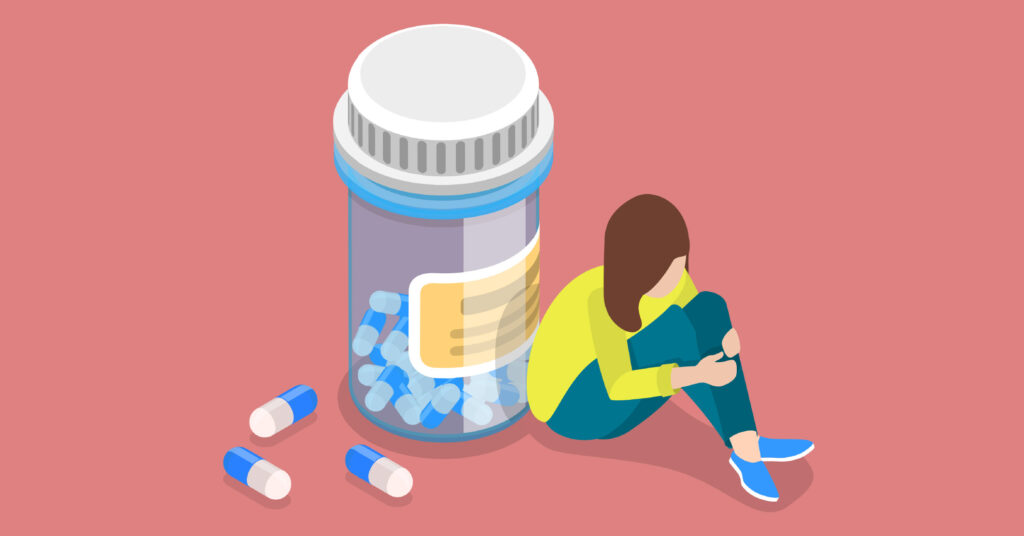Drug abuse and addiction are issues that impact families around the world. Both legal and illicit substances can lead to a lifelong battle with addiction, including alcohol, cigarettes, heroin and cocaine. People struggling with addiction can face many consequences related to their substance use disorder, from physical and psychological side effects to social and financial troubles.
Understanding the most commonly abused drugs is crucial for addressing addiction, implementing effective prevention strategies and providing appropriate treatment. Addiction statistics can provide a look at what drugs are most likely to result in abuse and reveal some of the most effective prevention strategies.
Drug Addiction Statistics From Top Data Sources
According to the National Institute on Drug Abuse (NIDA), adolescent drug use rates continue to hold steady, with no noticeable impact from pandemic shutdowns and social interruptions.
The Centers for Disease Control and Prevention (CDC) monitors drug overdose deaths in the United States, while the World Health Organization (WHO) provides a more global perspective on community impacts and overdose rates.
These sources tend to agree that some of the most commonly abused drugs include alcohol, prescription drugs (specifically opioids), stimulants, sedatives, marijuana and synthetic drugs.
Most Commonly Abused Drugs
- Alcohol
Alcohol abuse is a widespread concern, as overconsumption can lead to addiction, liver disease, mental health disorders, accidents and cognitive decline. Excessive alcohol consumption can impair judgment, coordination and decision-making, contributing to risky behaviors and health complications.
In 2023, 28.9 million people in the United States reported an alcohol use disorder.
Prescription Drugs
- Opioid abuse, including abuse of painkillers prescribed legally like oxycodone and hydrocodone, has contributed to an epidemic of addiction and overdose deaths.
While opioids continue to be a problem, for the first time since 2018, the United States has seen a decrease in the number of annual opioid overdose deaths. The numbers went from 84,181 in 2022 down to 81,083 in 2023. Unfortunately, shifts in overdose rates are extremely regional, with some states still reporting double-digit increases year-over-year.
Stimulants: Cocaine, Methamphetamines and Prescriptions
- Stimulant abuse can result in heightened alertness, euphoria and increased energy. Abuse of stimulants carries the risk of addiction, cardiovascular complications and psychological dependence.
Cocaine and methamphetamines are the most commonly abused stimulants. The number of stimulant prescriptions continues to accelerate — showing a 57.9% increase from 2012 to 2022 — and so does the use of illegal stimulants. Overdose deaths related to cocaine increased from 12,122 in 2015 to 57,497 in 2022, according to the National Institute on Drug Abuse.
Sedatives: Prescription, Heroin and Fentanyl
- Prescription benzodiazepines, which are used for anxiety and sleep disorders, are prone to abuse due to their sedative effects. Long-term benzodiazepine use can lead to tolerance, withdrawal symptoms and overdose risks when these drugs are combined with other substances. Approximately 5.9 million people misuse benzodiazepines and other sedative and tranquilizer medications each year.
Approximately 745,000 people use heroin each year, which is 7.4% of all opioid users. Heroin use is declining slowly, and overdose deaths from this sedative have also dropped. The rate per 100,000 people went from 1.8 in 2022 to 1.2 in 2023. Unfortunately, fentanyl is the most common replacement for heroin, and it accounts for nearly 70% of all unintended overdose deaths nationwide.
Marijuana
- Marijuana misuse can lead to addiction, cognitive impairment and mental health disorders, especially in adolescents and individuals with preexisting psychiatric conditions. An estimated 61.8 million people used marijuana in 2023, and continuing legalization and acceptance efforts may push that number substantially higher. As of 2024, 37 states and the District of Columbia have legalized recreational and medical marijuana use.
Synthetic Drugs: Synthetic Cannabinoids and Bath Salts
- Synthetic drugs, which are designed to mimic the effects of controlled substances, pose significant health risks. These synthetics have no safety testing before hitting the streets. Abuse of synthetic cannabinoids and bath salts can lead to severe medical emergencies and death. The number of synthetic drugs continues to skyrocket, with more than 300 new psychoactive substances (NPS) encountered by law enforcement officers. Fentanyl, discussed above under sedatives, also falls into the synthetic drug category.
Consensus Opinion From All Sources
While the prevalence of drug abuse may vary by region, age group and socioeconomic factors, certain substances consistently rank among the most commonly abused drugs globally. Alcohol, opioids, marijuana, stimulants, sedatives and synthetic drugs top the list across the globe. Access is the number one reason many of these substances so frequently result in addiction. Legal and easy access means there are more people struggling with alcohol and marijuana addiction than any other substances on the list.
If you or a loved one struggles with drug addiction, get help. At the National Rehab Hotline, we have counselors standing by to help you take the first steps toward sobriety and provide long-term treatment options and referrals.

